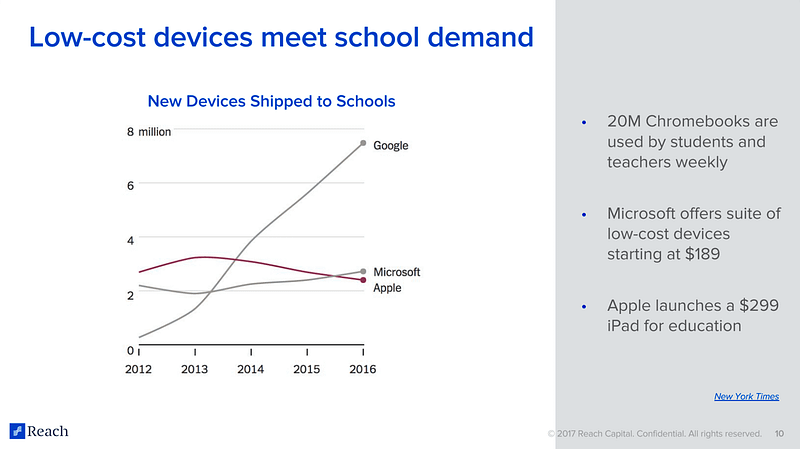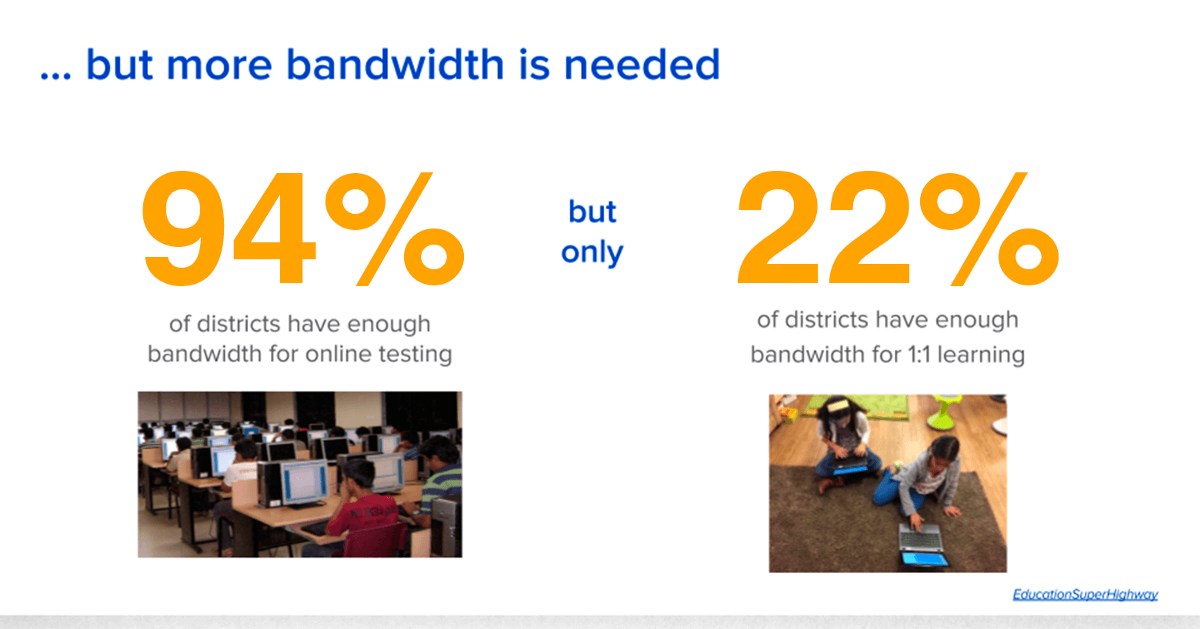by Jennifer Carolan and Chian Gong
This post was originally published on EdSurge by the Reach Capital team.
We’re pleased to share Reach Capital’s Edtech Outlook, a data-rich dive into the state of education technology with case studies into emerging-frontier innovations.
Education technology spans a broad category of classroom tools, spanning corporate learning, language learning, digital learning content and more. We focus here on Reach Capital’s sweet spot: school-based education technology.
For those that track this industry closely, the highlighted trends will not come as a surprise. But what may be more startling is just how fast technology is spreading to nearly every corner of the educational process. Founders are finding incredibly creative ideas to make learning more accessible, engaging and inspiring. Our pipeline of entrepreneurs is more diverse and robust than ever before and we see the pace accelerating rather than abating.
Yet, while educational software evolves rapidly, the infrastructure of schools is lagging and most public high school classrooms resemble a slightly more diverse version of “Fast Times at Ridgemont High.” We’re encouraged that groups like NewSchools Venture Fund and Silicon Schools are seeding new, innovative school models, but the inflexible scheduling, entrenched teacher training and traditional pedagogy still stand in the way of deeper change.
Here are some of the trends from 2017 we’re excited to share:
1. Nearly all schools are connected, but bandwidth is lagging.
While more than 94% of schools are connected to the internet, only 22% of them have enough bandwidth to handle the streaming demands of media-rich, 1:1 learning.
2. 1:1 (one device per student) is at 60% and growing rapidly.
Driven by online testing mandates, along with federal and state policies, we are moving quickly toward one device per child in our K-12 schools. Last year alone 20 million Chromebooks were used by teachers and students weekly. (There are 50 million students in US public schools). Schools provide these devices in a variety of ways (e.g. labs, carts, bring-your-own-device policies), but the combination of low-cost devices, an explosion of online learning content and ubiquitous connectivity has fueled the rapid shift toward 1:1.

3. AI is here.
Your students are already using it with homework help apps like MathPix and Socratic. And more AI-assisted products will be supercharging teachers very soon. The most powerful AI tools improve on existing human processes and make workflows more efficient. The need for automation is more acute with large class sizes when the assessment and feedback demands on educators are heavy. As a result, higher-ed institutions have been early adopters of AI-assisted tools.

4. The decline of the traditional publishers.
Over the past 3 years, the S&P has been up 24%, but publishers Pearson and Houghton Mifflin Harcourt have been down 58% and 32% respectively. Their slow transition to digital has cost them significant market share as lower-cost, more nimble startups have undercut their performance. Barring a major change to the status quo in leadership, we anticipate this downward trend will continue. Marketplaces like TeachersPayTeachers and Nearpod will increasingly become the go-to place for educational content.

5. Technology is enabling more human connection.
Despite software’s rapid penetration into education, we still believe that educators, parents, and mentors, are at the heart of the learning process. To be successful, platforms must help facilitate more meaningful connections between people with varied goals like increasing social capital and learning to read. One of the most unique and promising characteristics of technology is its ability to transcend physical boundaries and expand a learner’s circle of supporters. Smart education technologies recognize that human emotion is tightly bound to the learning process, and the best tools are built around this reality.



